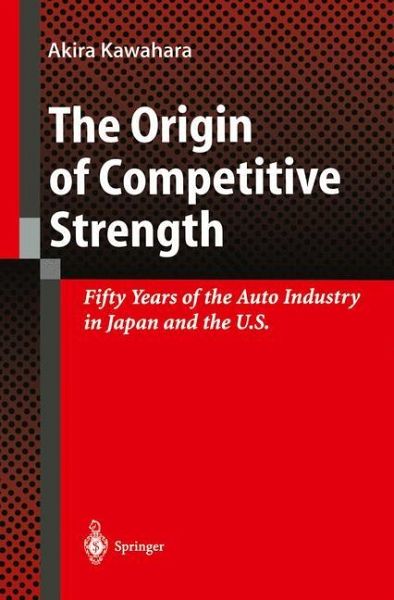
The Origin of Competitive Strength
Fifty Years of the Auto Industry in Japan and the U.S.

PAYBACK Punkte
19 °P sammeln!
When the war ended on August IS, 1945, I was a naval engineering cadet at the Kure Navy Yard near Hiroshima, Japan. A week later, I was demobi lized and returned to my home in Tokyo, fortunate not to find it ravaged by firebombing. At the beginning of September, a large contingent of the Ameri can occupation forces led by General Douglas MacArthur moved its base from Yokohama to Tokyo. Near my home I watched a procession of American mili tary motor vehicles snaking along Highway 1. This truly awe-inspiring cavalcade included jeeps, two-and-a-half-ton trucks, and enormous trailers mounted with ...
When the war ended on August IS, 1945, I was a naval engineering cadet at the Kure Navy Yard near Hiroshima, Japan. A week later, I was demobi lized and returned to my home in Tokyo, fortunate not to find it ravaged by firebombing. At the beginning of September, a large contingent of the Ameri can occupation forces led by General Douglas MacArthur moved its base from Yokohama to Tokyo. Near my home I watched a procession of American mili tary motor vehicles snaking along Highway 1. This truly awe-inspiring cavalcade included jeeps, two-and-a-half-ton trucks, and enormous trailers mounted with tanks and artillery. At the time, I was a 21-year-old student in the Machinery Section of Engineering at the Tokyo Imperial University. Watching that mag nificent parade of military vehicles, I was more than impressed by the gap in industrial strength between Japan and the U. S. That realization led me to devote my whole life to the development of the Japanese auto industry. I wrote a small article concerning this incident in Nikkei Sangyo Shimbun (one of the leading business newspapers in Japan) on May 2, 1983. The English translation of this story was carried in the July 3, 1983 edition of the Topeka Capital-Journal and the September 13, 1983 issue of the Asian Wall Street Journal. The Topeka Capital-Journal headline read, "MacArthur's Jeeps Were the Toyota Catalyst.














